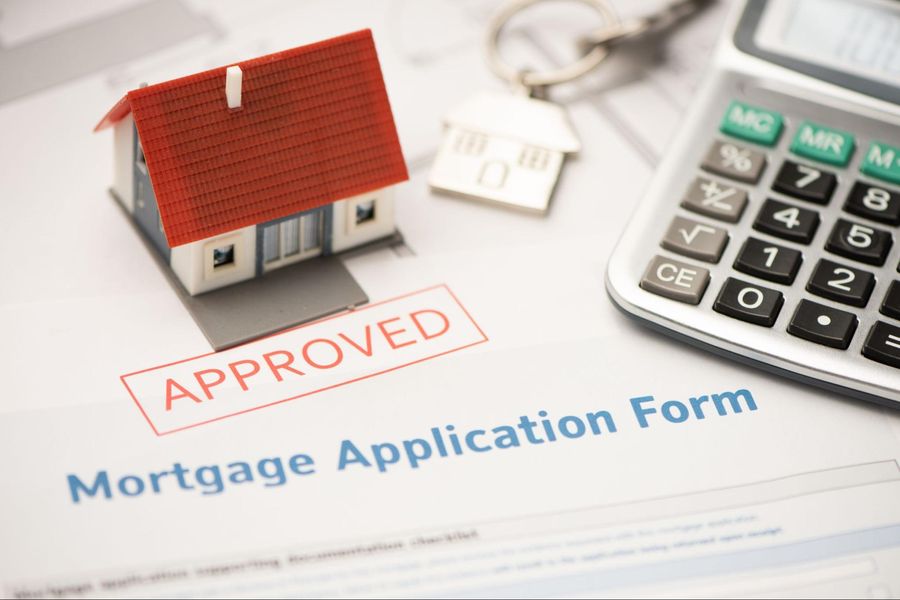Last Updated on October 24, 2023 by Emma Scott
After the United States 2016 election, the search “How to move to Canada” increased in search engine results dramatically. Since then, there has been an increase in curiosity surrounding what it’s like to move to, and live in, Canada. Alongside these international expats are a whole new demographic entering the housing market. More Canadians in their twenties and thirties are looking to buy their first home. This influx of people entering the Canadian real estate market has caused more people to question, “How do mortgages work in Canada?”.
In this article, we will provide a detailed look at how mortgages work in Canada and will include everything from finding a mortgage loan to what the different types of mortgages have to offer. At the end of this article, readers will know how a mortgage works and be ready to take the next step in the home buying process!
Saving a down payment
Although this payment is only a portion of the sale price, it signals to lenders that the buyers are financially sound and capable of making regular mortgage payments. Before jumping to finding a mortgage broker and a mortgage rate, begin saving up a down payment for your new Canadian home. Unless you have quite a bit of money already saved, it may be difficult to get a home loan.
Finding a mortgage lender
The first step in the mortgage process is to find a mortgage lender. A mortgage lender is a bank or organization that is willing to lend money to the borrower to supplement the costs of buying a house. In short, a lender will pay the price of the house and then the borrower will need to repay that cost in regular payments. We will touch more on this later.
In Canada, there are many different lenders to choose from. Most financial institutions like the Royal Bank of Canada (RBC), Scotiabank, and the Bank of Montreal (BMO) offer mortgage loans, also referred to as “primary lenders”. In order to be eligible to receive a mortgage loan, applicants must complete the pre-approval process which includes a and a review of their credit history.

The Mortgage Stress Test
The is a test that determines whether borrowers will be able to afford their mortgage payment if their interest rate increased. In order to determine this, credit unions, brokers and other financial institutions will evaluate borrowers’ debt, income, and how much extra money a borrower can spend on their mortgage interest payments while also affording initial closing costs, property tax, utilities and other fees associated with owning a home.
Other qualification criteria to get a mortgage
In order to qualify for a mortgage loan, applicants will need to apply for a mortgage. Most lenders require applicants to supply government-issued ID, proof of address, proof of employment and employment history, a credit history report, their credit score and a bank account with a Canadian bank. This information will allow a broker or lender to determine what your budget is and how much you can viably afford using the Gross Debt Service (GDS) Ratio and Total Debt Service (TDS) Ratio.
Open and closed mortgages
After applying for a mortgage, borrowers will need to determine what type of mortgage they would like: open or closed. All mortgages in Canada are either open or closed. Open and closed mortgages have different mortgage terms that dictate what is allowed and what is not, including how often mortgage payments can be made and how much can be paid off. It is important to evaluate what is important to you and how your financial situation may be in the future when deciding what type of mortgage you would like.
A closed mortgage offers lower interest rates in exchange for more prepayment penalties. These mortgage penalties outline the mortgage term and limit how much money can be paid for each payment. Overall, borrowers can have lower monthly mortgage payments in exchange for a longer amortization period with a closed mortgage.
In contrast, an open mortgage provides prepayment privileges at higher interest rates. With an open mortgage, borrowers’ monthly payments are not limited to a specific amount of money. Rather, borrowers can make lump sum payments of their choice to pay off their mortgage faster.

Before deciding what type of mortgage you should choose, ask yourself these questions:
- Will you be in the financial situation to pay off your mortgage early?
- Do you plan on selling your home before the mortgage term is completed?
- What mortgage rates can you afford?
These questions will allow you to determine whether you can afford a high mortgage rate for a short amortization period.
The ins and outs of mortgage insurance
Alongside choosing an open or closed mortgage, borrowers will need to determine whether they need to (or should) purchase mortgage insurance. Mortgage loan insurance is insurance that is designed to protect investors’ interests. If a borrower were to miss a payment or default on their mortgage, lenders would be protected from the financial risks thanks to insurance.
Due to mortgage insurance’s important role in protecting lenders, most banks require borrowers with a high ratio mortgage to purchase insurance. A high ratio mortgage is when individuals can only afford to pay less than 20% of the purchase price in their initial payment, leaving their lenders responsible for over 80% of the cost of the property. Although there is the extra risk associated with this type of home loan, individuals can still expect to receive a decent mortgage rate.
Contrary to popular assumptions, home loan insurance is not required for all loans. When buyers have a 20% down payment rather than the typical 5%, their home loan automatically becomes a conventional mortgage. Conventional mortgages do not require insurance as the large initial payment proves the borrowers’ financial responsibility. This means that mortgage lenders will grant individuals with 20% down payments a mortgage loan without requiring insurance.
Additionally, some applicants may only qualify for uninsured mortgages when they are presented with their mortgage options. This type of home loan cannot be insured by default, meaning that it is not possible for mortgage default insurance to be purchased for this loan. In most cases, mortgages are uninsurable when they are non-owner-occupied properties, have an amortization period of longer than 25 years, are purchases of 1,000,000 or more, or simply don’t meet the requirements to be insured.
Types of mortgages
Alongside open and closed, conventional and high ratio mortgages, there are also variable-rate and fixed-rate mortgages In Canada. These types of home loans detail how payment can be made towards a new property.
Fixed-Rate mortgages
A fixed-rate mortgage is a mortgage loan that has a fixed interest rate, meaning that it will not change throughout the entire duration of the loan. While fixed mortgages can be beneficial if you receive a at the time of signing, the average current interest rate may change and fall below the mortgage interest rate you’ve signed on for. Fixed-rate mortgages are only recommended for anyone who receives a good interest rate or desires stability rather than possible fluctuations.
Variable-rate mortgages
A variable-rate mortgage is a mortgage with a variable interest rate. This means buyers can expect interest rate fluctuations to occur whenever the economy changes. Although rate changes may seem scary, they can be extremely beneficial. If the average interest rates drop, buyers with variable mortgages can pay lower rates.

The myth of deductible mortgage interest
In Canada, there is a pervasive myth that mortgage interest can be tax-deductible if a self-employed person runs a business out of their home. This is false, buyers can only write off some of their property taxes if they operate a business out of their homes.
Renewing your term
A mortgage term is the period of time that a mortgage contract will be in effect. This term typically varies from several months to five years, but it can be much longer if your mortgage broker agrees to it. Before the term is up, borrowers will need to renew their contracts with their lenders. They can either negotiate new terms or choose to sign a contract with their pre-existing terms.
Apply for a mortgage
In sum, it is relatively straightforward to get a mortgage in Canada. The flexible mortgage market also makes it easy for homebuyers to receive a loan that works for them.
In order to receive low rates and freedom with their home loan, buyers will need to complete qualification criteria and prove to lenders that they are trustworthy and reliable with their finances.
Before applying for a mortgage, do your research on the types of mortgages available and what may be best for your financial situation. While online mortgage calculators can be helpful, speaking to a professional advisor is one of the most reliable ways to find the right mortgage for you.
Emma Scott is a Content Writer with a passion for accessibility, the environment, and history. She currently works for Merged Media (a proud partner of CREW & REP) in Guelph, Ontario.









